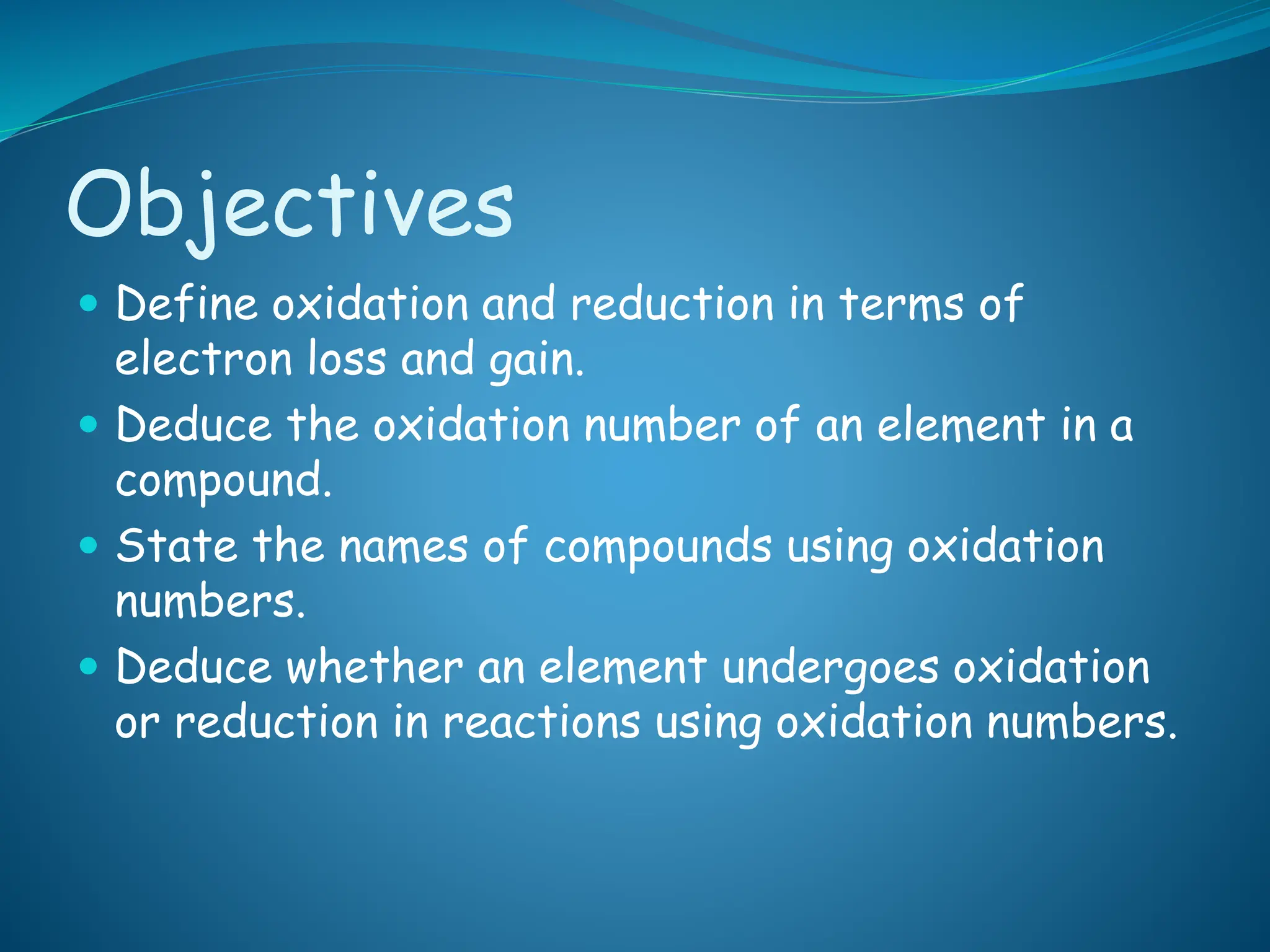The document provides information on redox reactions including:
- Defining oxidation and reduction in terms of electron loss and gain.
- Explaining how to deduce the oxidation number of elements in compounds and use oxidation numbers to name compounds.
- Stating that redox reactions involve the transfer of electrons between chemical species.
- Describing how to write half reactions to show electron transfer and combine them to give overall redox equations.
- Explaining how to assign oxidation numbers and use them to determine if an element is oxidized or reduced in a reaction.





































